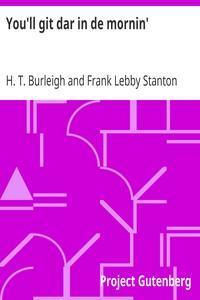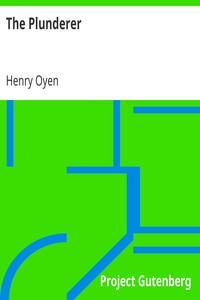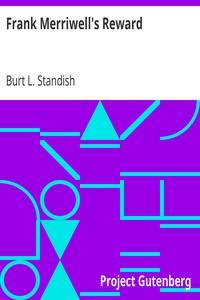|
|
Read this ebook for free! No credit card needed, absolutely nothing to pay.Words: 6802 in 3 pages
This is an ebook sharing website. You can read the uploaded ebooks for free here. No credit cards needed, nothing to pay. If you want to own a digital copy of the ebook, or want to read offline with your favorite ebook-reader, then you can choose to buy and download the ebook. radium, and showed that these were charged helium atoms. To discuss more at length the extraordinary characteristics of helium, which plays so large a part in celestial affairs, would take us too far afield. Let us therefore pass to another case in which a fundamental discovery, this time in physics, was first foreshadowed by astronomical observation. SUN-SPOTS AS MAGNETS No archaeologist, whether Young or Champollion deciphering the Rosetta Stone, or Rawlinson copying the cuneiform inscription on the cliff of Behistun, was ever faced by a more fascinating problem than that which confronts the solar physicist engaged in the interpretation of the hieroglyphic lines of sun-spot spectra. The colossal whirling storms that constitute sun-spots, so vast that the earth would make but a moment's scant mouthful for them, differ materially from the general light of the sun when examined with the spectroscope. Observing them visually many years ago, the late Professor Young, of Princeton, found among their complex features a number of double lines which he naturally attributed, in harmony with the physical knowledge of the time, to the effect of "reversal" by superposed layers of vapors of different density and temperature. What he actually saw, however, as was proved at the Mount Wilson Observatory in 1908, was the effect of a powerful magnetic field on radiation, now known as the Zeeman effect. Faraday was the first to detect the influence of magnetism on light. Between the poles of a large electromagnet, powerful for those days , he placed a block of very dense glass. The plane of polarization of a beam of light, which passed unaffected through the glass before the switch was closed, was seen to rotate when the magnetic field was produced by the flow of the current. A similar rotation is now familiar in the well-known tests of sugars--laevulose and dextrose--which rotate plane-polarized light to left and right, respectively. But in this first discovery of a relationship between light and magnetism Faraday had not taken the more important step that he coveted--to determine whether the vibration period of a light-emitting particle is subject to change in a magnetic field. He attempted this in 1862--the last experiment of his life. A sodium flame was placed between the poles of a magnet, and the yellow lines were watched in a spectroscope when the magnet was excited. No change could be detected, and none was found by subsequent investigators until Zeeman, of Leiden, with more powerful instruments made his famous discovery, the twenty-fifth anniversary of which has recently been celebrated. His method of procedure was similar to Faraday's, but his magnet and spectroscope were much more powerful, and a theory due to Lorentz, predicting the nature of the change to be expected, was available as a check on his results. When the current was applied the lines were seen to widen. In a still more powerful magnetic field each of them split into two components , and the light of the components of each line was found to be circularly polarized in opposite directions. Strictly in harmony with Lorentz's theory, this splitting and polarization proved the presence in the luminous vapor of exactly such negatively charged electrons as had been indicated there previously by very different experimental methods. In 1908 great cyclonic storms, or vortices, were discovered at the Mount Wilson Observatory centring in sun-spots. Such whirling masses of hot vapors, inferred from Sir Joseph Thomson's results to contain electrically charged particles, should give rise to a magnetic field. This hypothesis at once suggested that the double lines observed by Young might really represent the Zeeman effect. The test was made, and all the characteristic phenomena of radiation in a magnetic field were found. Thus a great physical experiment is constantly being performed for us in the sun. Every large sunspot contains a magnetic field covering many thousands of square miles, within which the spectrum lines of iron, manganese, chromium, titanium, vanadium, calcium, and other metallic vapors are so powerfully affected that their widening and splitting can be seen with telescopes and spectroscopes of moderate size. THE TOWER TELESCOPE Perhaps a word of caution should be interpolated at this point. Solar magnetism in no wise accounts for the sun's gravitational power. Indeed, its attraction cannot be felt by the most delicate instruments at the distance of the earth, and would still be unknown were it not for the influence of magnetism on light. Auroras, magnetic storms, and such electric currents as those that recently deranged several Atlantic cables are due, not to the magnetism of the sun or its spots, but probably to streams of electrons, shot out from highly disturbed areas of the solar surface surrounding great sun-spots, traversing ninety-three million miles of the ether of space, and penetrating deep into the earth's atmosphere. These striking phenomena lead us into another chapter of physics, which limitations of space forbid us to pursue. Free books android app tbrJar TBR JAR Read Free books online gutenberg More posts by @FreeBooks
: You'll git dar in de mornin' by Burleigh H T Harry Thacker Stanton Frank Lebby - African Americans Songs and music@FreeBooksTue 06 Jun, 2023
|
Terms of Use Stock Market News! © gutenberg.org.in2025 All Rights reserved.






